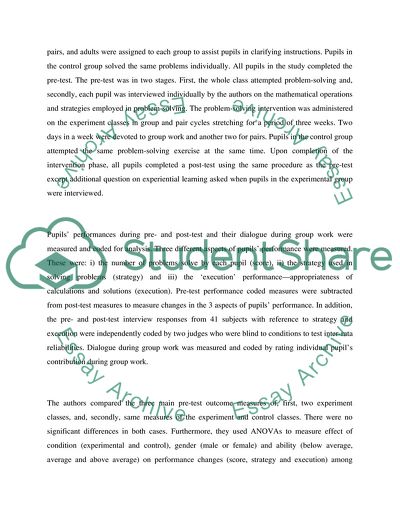Cite this document
(Conceptual Gain and Successful Problem-solving in Primary School Case Study, n.d.)
Conceptual Gain and Successful Problem-solving in Primary School Case Study. Retrieved from https://studentshare.org/education/1723799-a-review-of-a-quantitive-education-research
Conceptual Gain and Successful Problem-solving in Primary School Case Study. Retrieved from https://studentshare.org/education/1723799-a-review-of-a-quantitive-education-research
(Conceptual Gain and Successful Problem-Solving in Primary School Case Study)
Conceptual Gain and Successful Problem-Solving in Primary School Case Study. https://studentshare.org/education/1723799-a-review-of-a-quantitive-education-research.
Conceptual Gain and Successful Problem-Solving in Primary School Case Study. https://studentshare.org/education/1723799-a-review-of-a-quantitive-education-research.
“Conceptual Gain and Successful Problem-Solving in Primary School Case Study”, n.d. https://studentshare.org/education/1723799-a-review-of-a-quantitive-education-research.


